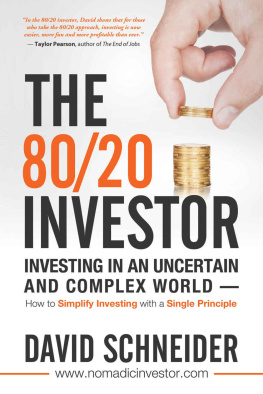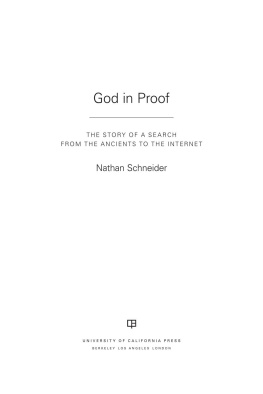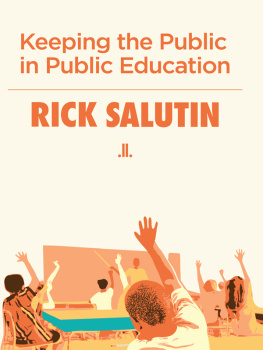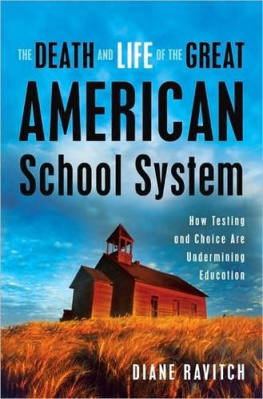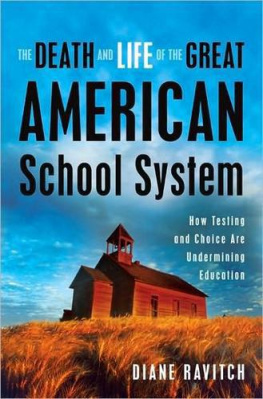Mercedes K. Schneider
Foreword by Karen GJ Lewis

Published by Teachers College Press, 1234 Amsterdam Avenue, New York, NY 10027
Copyright 2016 by Teachers College, Columbia University
Cover photos: Bulldozer by Maria Jeffs / Shutterstock. Bricks by garycycles8 under a creative commons attribution license / Flickr.
Grateful acknowledgment is made to reprint the following:
Excerpts in from Solo, Robert A., ed. Economics and the Public Interest: Practical Applications of Economics to Problems of Public Welfare. Copyright 1955, 1983 by Robert A. Solo. Reprinted by permission of Rutgers University Press.
Excerpt in . All rights reserved.
Excerpt in ). Used with permission.
Excerpts in
Excerpts in ) blog entry by Jennifer Berkshire. Used with permission of the author.
All rights reserved. No part of this publication may be reproduced or transmitted in any form or by any means, electronic or mechanical, including photocopy, or any information storage and retrieval system, without permission from the publisher.
Library of Congress Cataloging-in-Publication Data is available at loc.gov
ISBN: 978-0-8077-5725-3 (paper)
ISBN: 978-0-8077-7424-3 (ebook)
For Billy, Rita, Anna, and Johnny
Folly is set in great dignity and in high places.
Ecclesiastes 10:6a
Contents
Foreword
If you have the opportunity to meet Mercedes [Mer-suh-DEEZ] Schneider, she will charm you with her Southern Louisiana drawl and her lady-like, good home training manners, but what you will find is her laser focus on the defense of public education. Having taken on the origins of the Common Core State Standards and the politicians and oligarchs whose mission is the abject destruction of the democratic ideal of American public education, she turns that focus on the concept of school choice in the form of vouchers and charters.
While deftly annotated, this is no overwhelming scholarly tome for which youll need your dictionary. This book is designed to be a comprehensive, accessible explanation of what school choice really is, beginning with its origins in sex segregation in the Massachusetts Bay Colony as a way to keep boys out of troubleeven as compulsory education for girls was nonexistent. Schneider clearly notes early and often that public education was seen as a means of turning Americans, whether native or foreign born, rural or urbaninto patriotic and law-abiding citizens, thereby achieving the Jeffersonian goal of securing the republic.
Schneider further draws on the wisdom of Horace Mann, who believed that universal public education could counter act the domination of capital and the servility of labor. Mann used the term the great equalizer, a phrase that sounds all too familiar to those of us engaged in the skirmishes of the current education wars. Mann was also concerned about the physical conditions of schools, what we consider working conditions that are part and parcel of modern union contracts.
Schneider lets us know that as early as 1855, Massachusetts outlawed racial segregation in public schools, but she also reminds us that it wasnt until 1954 with Brown v. Board of Education that racial segregation was outlawed federally. Interestingly, this led to the development of schools of choice throughout the South and the first use of public dollars for private segregated academies.
Schneider adds, When I read that school choice is being termed a civil rights issue in the 21st century, I find the irony profound given that school choice was a tool used in certain states to intentionally defy federal desegregation mandates in the latter 20th century. Schneider lists plan after plan, each attempting to skirt desegregation and preserve White supremacy and its proponents. Each plan found ways to institute school choice by providing scholarships for White students to attend nonsectarian private schools. These measures subverted the intention of desegregating schools until the 1960s. Schneider also puts the market fundamentalism of Milton Friedman, considered the father of modern school choice, under her microscope and finds it not only wanting but detrimental to the ultimate goal of desegregation.
Schneider moves on to take on the concept of charter, which, as many know, began as a concept put forth by educators Ray Budde and Albert Shanker (the former a professor at the University of Massachusetts Amherst and the latter a former president of the American Federation of Teachers), who both saw the value of teacher-led schools freed from the restraints of district and government mandates that stifled innovation. Unfortunately, the charter movement was quickly coopted by the voucher movement and Friedman neoliberal market fundamentalists. Frankly, it all sounds so very good on paper: Why should poor children be trapped in failing schools? Its such a common refrain that appeals to a wide range of folks. The answer is they shouldnt. But charter schools are no more successful at helping all children than traditional public schools. What theyre good at, Schneider demonstrates, is selecting their students carefully and spending public money outside of public purview. Charter schools, with their un-elected boards and conflicts of interestsome folks on these boards have businesses that benefit from having access to all those public dollarstend toward corruption. She cites case after case and includes dollar amounts of monies stolen from the public coffers and transferred to smooth operators with no moral compasses. Unfortunately, Budde and Shankers vision has gone completely awry.
Ive always wondered why choice-promoting, billionaire philanthropists who so often shed crocodile tears over the plight of poor children just dont pool their resources and fund public schools in an effort to simulate the schools where they send their own children. Schneider doesnt provide the answershes way too good a teacher for thatbut she arms readers with facts. Its up to us to take this wealth of information, use it, and create a movement that fights for democracy, real accountability, and ultimately, excellent public schools for all.
Karen GJ Lewis
Acknowledgments
This book is the third that I have written over the course of three summersone book per summer. An amazing accomplishment, one for which I thank the Lord Jesus Christ first and foremost, for it is He who gave me the intelligence, stamina, and people to help me publish all three.
Next, I would like to thank an individual who has been a wonderful support for the writing of this book and who has asked to remain anonymous. Even though I would prefer to acknowledge this most valued contributor by name, I will respectfully honor this persons request.
In addition, my heartfelt gratitude goes out to my colleague, Janna Robertson, for her kind efforts in raising the funds to pay for the indexing of this book, and for the generous donors to that effort: Elaine Cooper, Mark Joyce, Christine Langhoff, Ray Nichols, Karen Oil, Ann Porter, Denise S., Virginia Tibbetts, Alison Thompson, and several anonymous contributors.
I am also indebted to editor extraordinaire, Jean Ward, for her support, expertise, and care in transforming manuscript into published work, and I thank all at Teachers College Press who contributed to this work.
Finally, a special acknowledgement of my friends, Jennifer Berkshire and Belinda Breaux, who made me smile on numerous occasions with their almost-convincing protestations that this book should indeed be dedicated to them.



